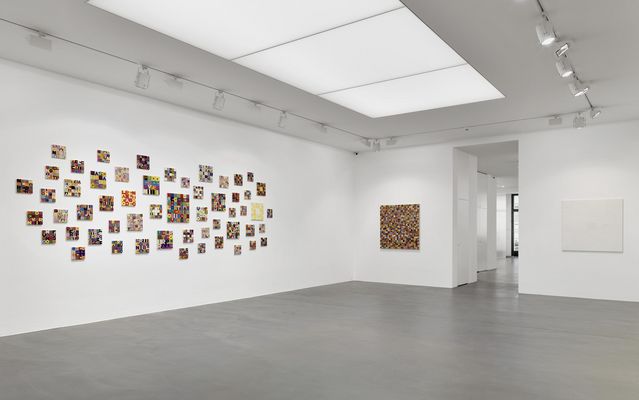
Alighiero Boetti alias Alighiero e Boetti was born on 16 December 1940 in Turin. Alighiero Boetti came to prominence as part of the Arte Povera movement in the late 1960s. The artists of this movement rejected the marble sculptures and oil paintings of their grand Italian forebears and worked with everyday or organic materials like slate, wax, wood and felt. Boetti’s early works such as “Mazzo di tubi” and “Rotolo di cartone ondulato” from 1966 recall the curious and playfully inventive gestures and interactions with material that one makes as a child, and which Boetti himself recalled doing in his youth.
In 1972 Boetti moved to Rome and became a master of Conceptual art. Dossier Postale (1969-70), consisting of 26 letters sent to famous recipients at imaginary addresses, demonstrated his preoccupation with improbability and chance. Around this time the artist changed his name to Alighiero e Boetti and started signing his work this way. Boetti often created work in series and one of his best-known is the multi-coloured embroideries known as “Arazzi”. These are mosaic-like grids of individual letters, which combine into words and phrases that the viewer must decipher. The viewer must do this by reading from from top to bottom, left column to right. The phrases range from proverbs and poetry to, in the case of 1974’s “Addizione”, the setting out of a mathematical problem.
Boetti’s most famous series is his “Mappe” — tapestry maps of the world on which each country is represented by the colours of its flag. A total of 150 exist, in a variety of sizes, dating from 1971 to 1994. Together they form a holistic, ideological portrait of the passing of time and geopolitical shifts while simultaneously postulating the notion of a united world. In 1977 Boetti published Classifying the Thousand Longest Rivers in the World, a tome that took seven years to complete and involved ranking the 1,000 longest rivers on Earth. Boetti also made a number of vast works in minutely scrawled biro, such as “I sei sensi”, which is part of a series of drawings done in code.
His final embroidery series, “Tutto” might seem seem like Abstract Expressionist compositions, yet a closer look reveals they actually depict everyday objects and symbols, packed together as if forming a brightly-woven jigsaw puzzle. Boetti died in 1994 in Rome, aged 53, and even though he once was considered a purely Italian artist for the Italian market, now he’s very much a global figure with a global market.